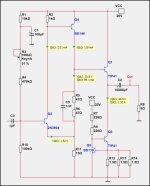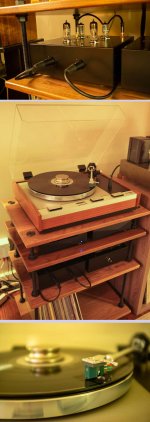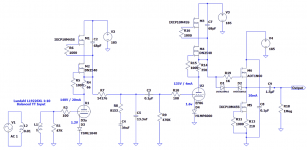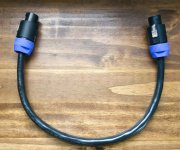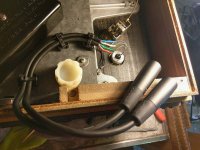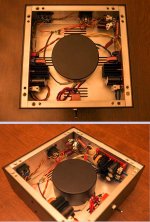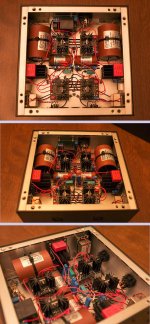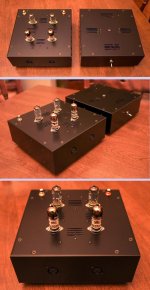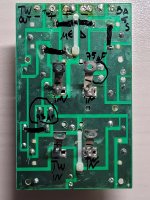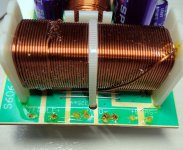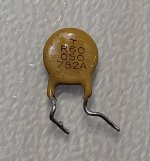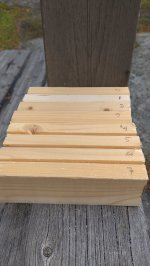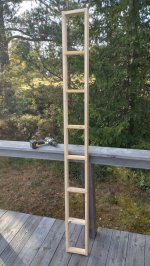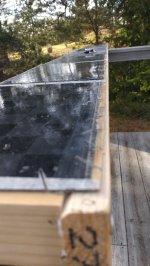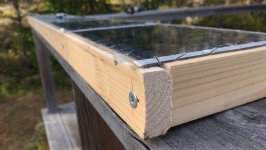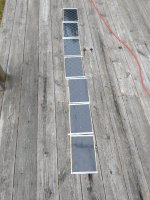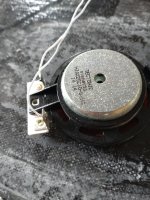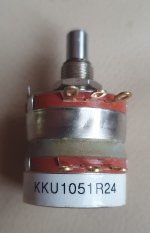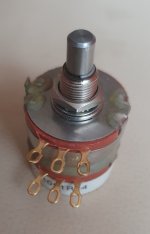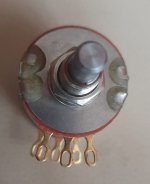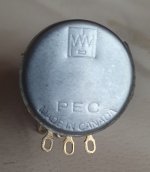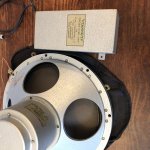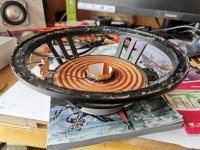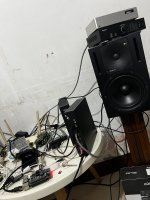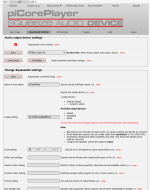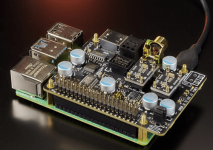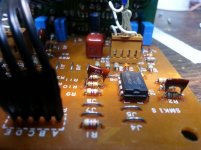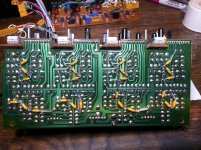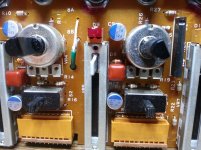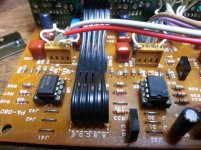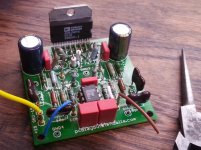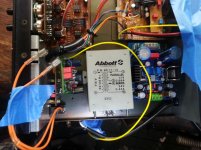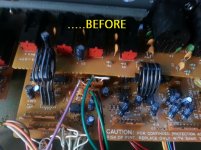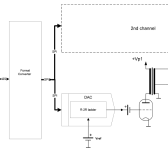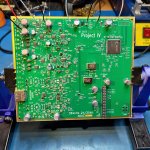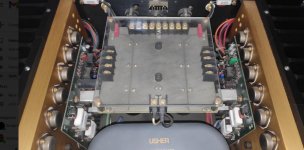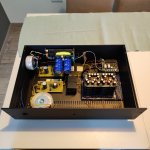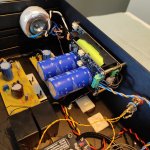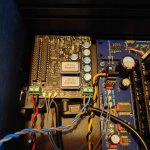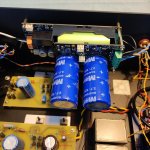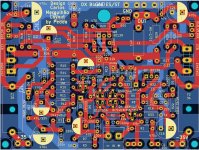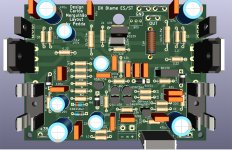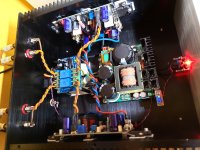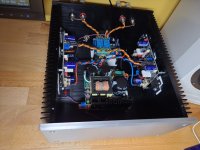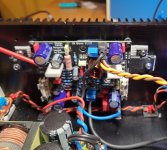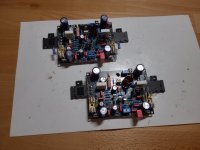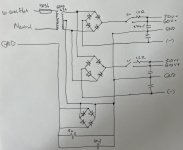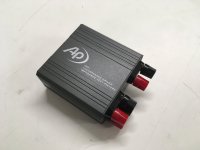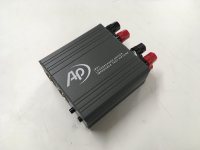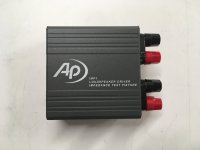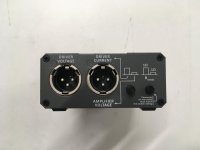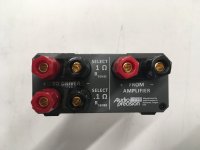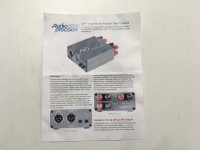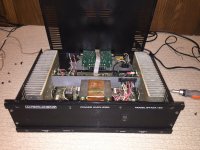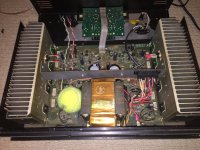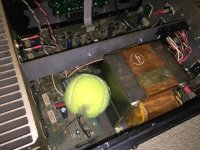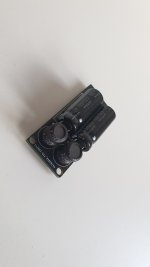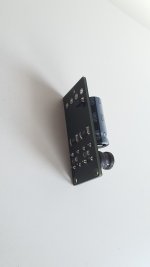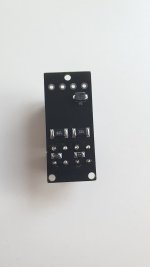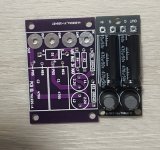I was going to build an opamp mixer (for my synths) from scratch, being that the circuits are fairly simple.
But that's a lot of routing, pots, and connectors.
So I had a look at older and cheap mixers on e-bay.
I found that these
Kawai (MX-8SR) mixers had plenty of room inside. Plus they were all built with "through-hole" components and single-sided (non-plated through hole), making the part swapping easy.
I was able to buy the schematic online. Not easy to find !! (contact me, I have it scanned)
What I did NOT change, was any switches, pots, and connectors. I also left the "peak meters" alone. The point of this, was to have all the hardware in-place....a real time-saver !!!
I left most of the film resistors alone, except around the balancing output circuit, where I swapped in some precision 10k Vishay's (RNC90y).
Swapped parts (briefly):
All opamps. 4558dd .....to mostly LM4562 (no sockets !).
Disc ceramics....to film types (except for power-supply bypassing).
DC blocking aluminum caps.....to (lower value) film type.
+12.6v PSU.....to new 317/337 @ voltages of my choice, and a new power transformer.
Headphone circuit removed.....replaced with my own (based on Jung composite line driver, AD823/AD815ay)
Notes:
The LM4562 is a "fast" opamp. To prevent stability problems (like oscillation) I added 0.1uf ceramic bypass caps directly to the power-supply pins(4&8) of each opamp, to ground, and another 0.1uf cap directly from pin 4-to-8.......all on the underside of the board. (see pic 2)
There were NO bypass caps there, previously.
I also did NOT use sockets....the new opamps were soldered in place.
Feedback loop compensation caps used to be ceramic, now they are mica types. Where there were no compensation caps, I "piggy-backed" some 12pf caps, soldered right on top of the feedback resistor (bridging it), just to ensure stability. (I did not calculate this value, I guessed
😱 ) (see pic 1)
Preliminary testing....no oscillation ! (I was worried) The new opamps run barely warm to-the-touch.
Since there are 8 stereo inputs, I reserved lines 7 & 8 for "opamp swapping", where I did add opamp sockets. This is just for curiosity and testing. Right now, one line has NE5532's, and the other OPA2107's. Will I be able to hear a difference ? Time will tell. (see pic 4)
Mixers like this are chock-full of DC blocking caps at the opamp inputs, because a variety of outside signals are fed into the unit which may be passing along unknown DC....making such caps nearly necessary. (see pic 7 "before")
All those caps were previously electrolytics, so those were replaced by film types.
There were a few places that still needed electrolytics.....and I didn't wildly replace ALL of them. The electrolytics left in the circuit were swapped out for newer versions. (I even tried some polymer 'lytics) (see pic 3)
The original headphone circuit seemed weak, as it employed just one 5216p dual opamp, for stereo. I'm adding a separate headphone board I "designed" (actually, Jung did, I copied it for my private use, I made a few adjustments)....that fits quite easily inside. (see pic 5)
The original PSU circuit fed the entire unit with
+12.6v.
I am able to raise this to suit the opamps with my new PSU, but I need to think about....if the metering circuits can handle up to
+15.5v (??). The output level meter already has trimmer pots for level adjustment.
A (shielded) transformer was replaced accordingly, to suit higher voltages if desired. (see pic 6)
You gotta love the older pc boards.....big holes that when using a wick and a decent iron, de-solder so easily !
Luckily, the schematic was accurate, except for a couple of errors.....and the boards were clearly marked.
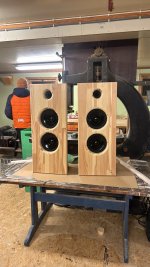
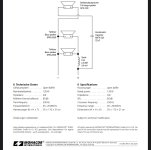
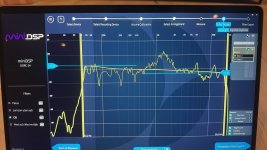

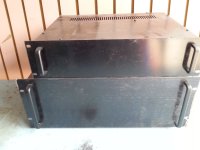
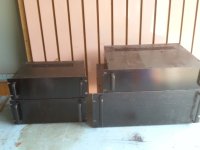
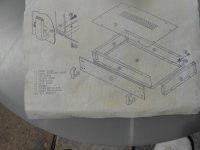
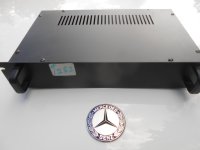

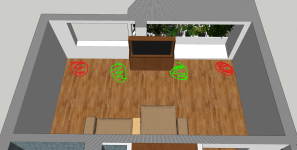
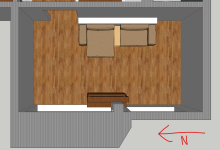
![IMG_20231226_155424987_-_Copy[1].jpg IMG_20231226_155424987_-_Copy[1].jpg](https://www.diyaudio.com/community/data/attachments/1159/1159441-e81656f4c33072979ea87771e1f1955f.jpg?hash=6BZW9MMwcp)
![IMG_20231226_155440225[1].jpg IMG_20231226_155440225[1].jpg](https://www.diyaudio.com/community/data/attachments/1159/1159439-92802c8ba8ff04ba4f8ea7c99fc559ab.jpg?hash=koAsi6j_BL)
![IMG_20231226_155411103_-_Copy[1].jpg IMG_20231226_155411103_-_Copy[1].jpg](https://www.diyaudio.com/community/data/attachments/1159/1159443-a66e8691bc9e60cfeccc15bee622a562.jpg?hash=pm6GkbyeYM)
![IMG_20231226_155309531[1].jpg IMG_20231226_155309531[1].jpg](https://www.diyaudio.com/community/data/attachments/1159/1159445-69d5361e12ba412f4815ae26bf1fd873.jpg?hash=adU2HhK6QS)
![IMG_20231226_155322860[1].jpg IMG_20231226_155322860[1].jpg](https://www.diyaudio.com/community/data/attachments/1159/1159447-ea16e8ac313f0b4bb22de58d83489ea0.jpg?hash=6hborDE_C0)
![IMG_20231226_154750980[1].jpg IMG_20231226_154750980[1].jpg](https://www.diyaudio.com/community/data/attachments/1159/1159450-683e46126b3bc64edf19e3a6868cb76c.jpg?hash=aD5GEms7xk)
 On my current build I began w/out and then started using it, far superior results w/.
On my current build I began w/out and then started using it, far superior results w/.